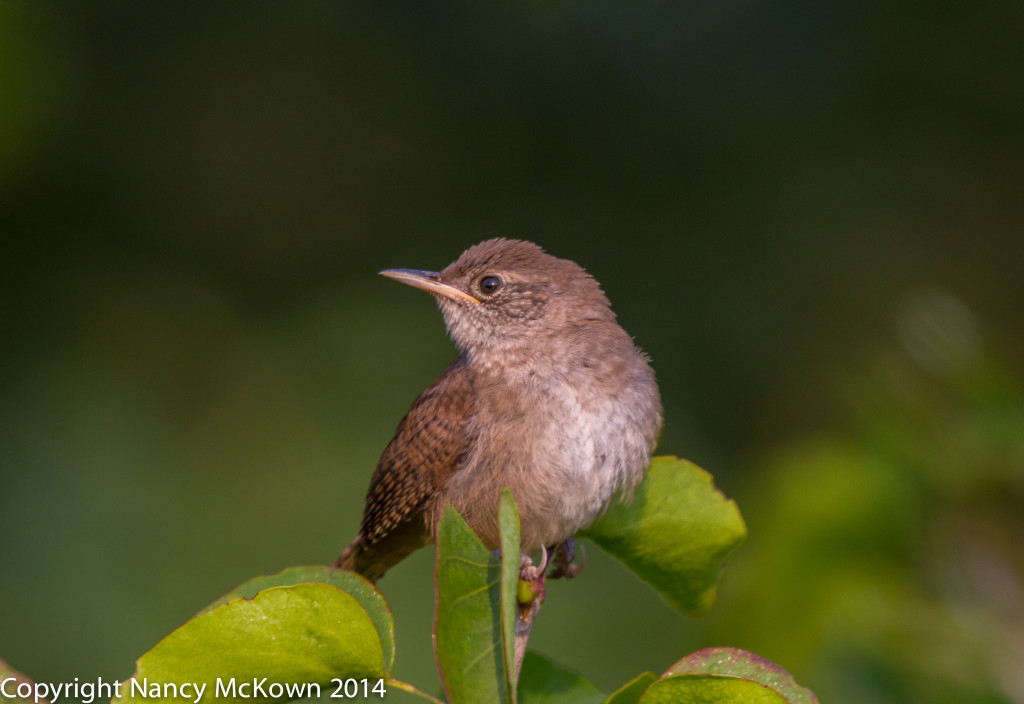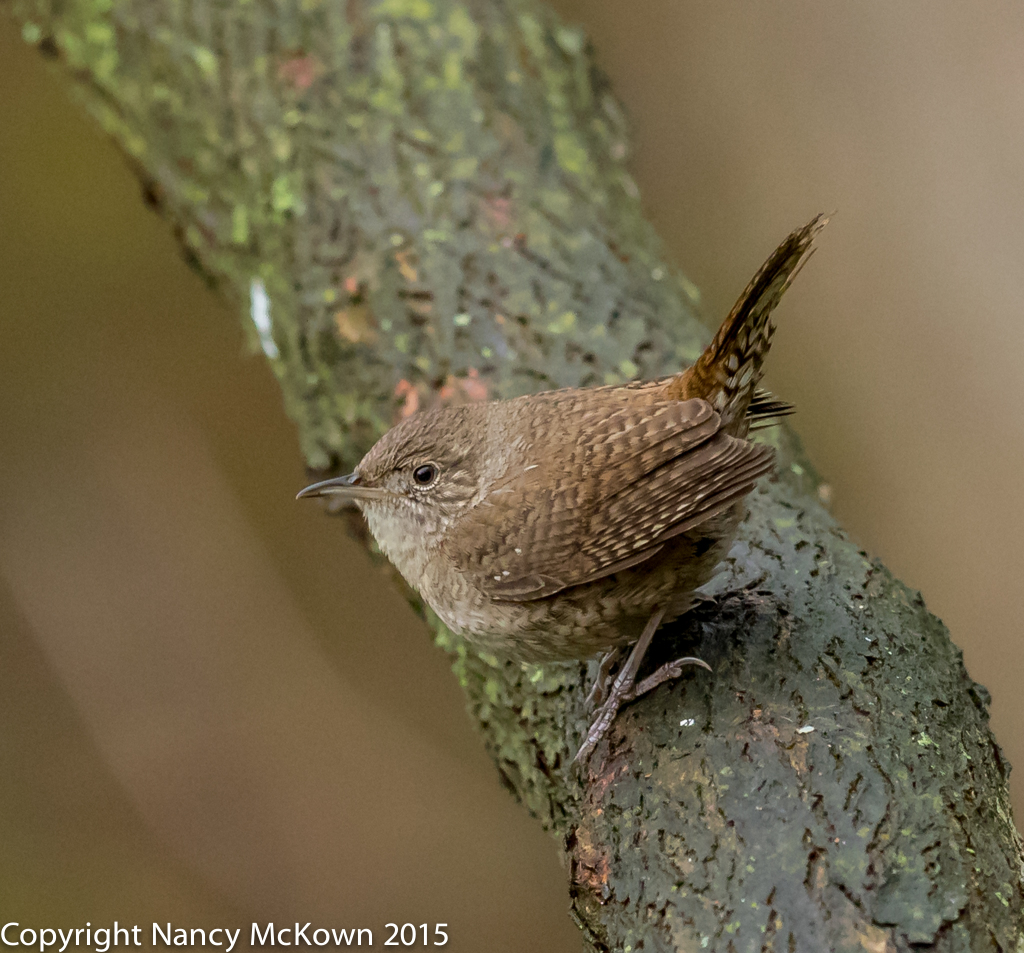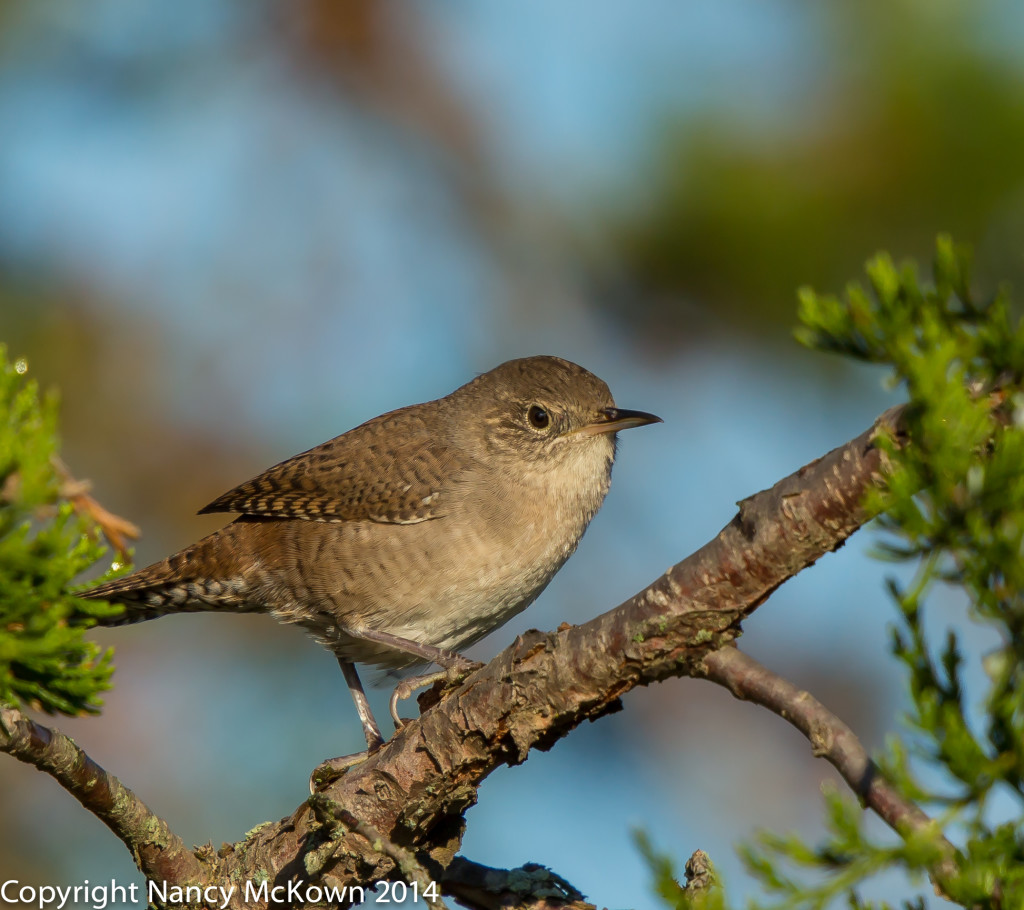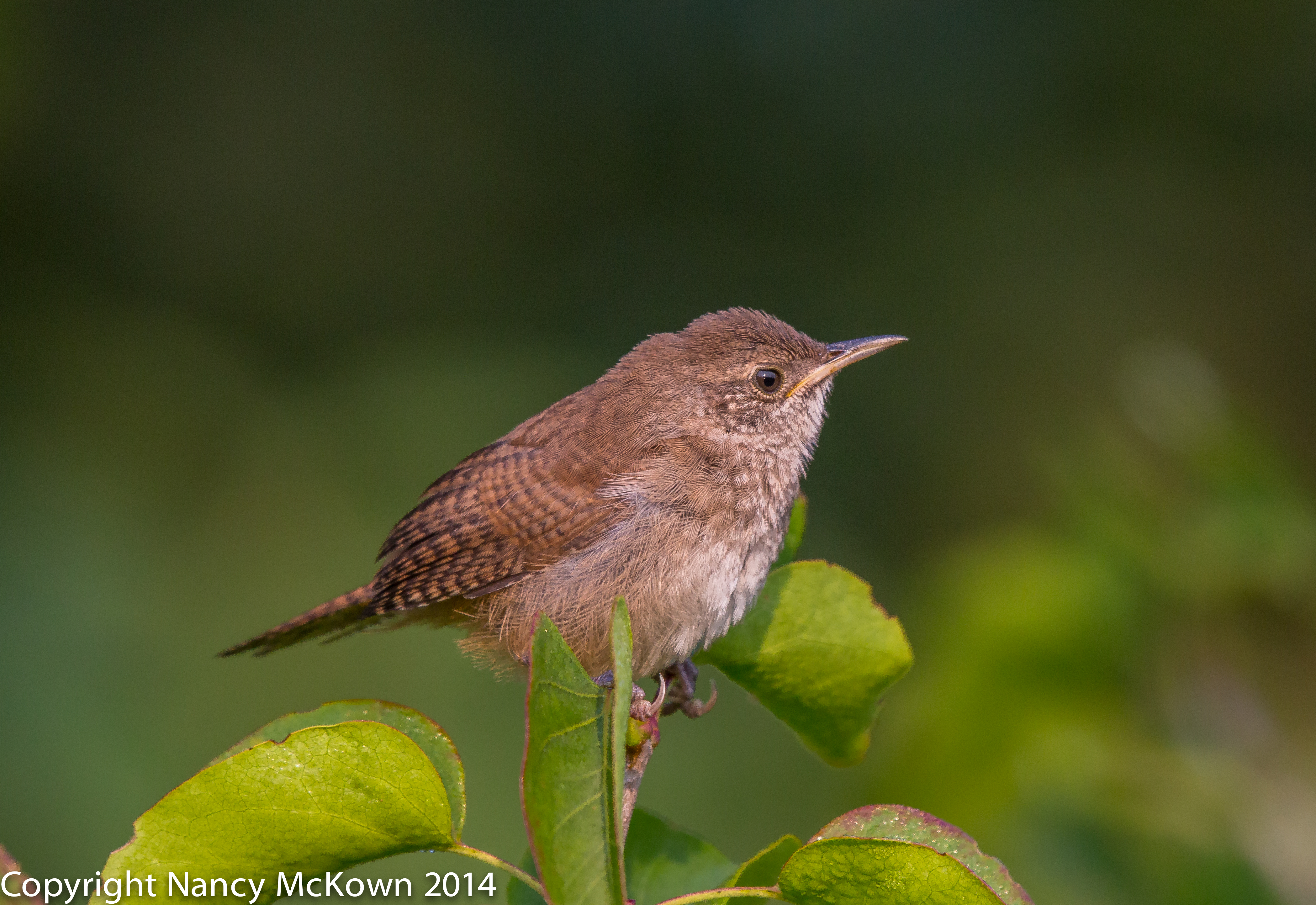Photographing House Wrens
Early Spring brings with it joyful bird song in the air. One of the first vocalizations I hear are the cheerful, jaunty tunes of the male and female House Wrens. It’s such a joy to listen to their effervescent voices. (NOTE: To hear songs of the House Wren, press this link.)
Each April, I observe and photograph the House Wrens busy with their spring preparations, and I try to determine if this year’s residents are the same individuals as last year. Since these birds (male and female) are so similar physically, I try to match behaviors and personalities that I remember from the previous year. It’s not as hard as you think.

Personality of Birds
Most species of birds are categorized by an assortment of characteristics. These include not only physical characteristics, but a description of the behaviors attributed to the male and/or female. House Wrens have these commonly known attributes:
- Physical description – (small brown songbird, long curved bill, long tail often cocked skyward, male and female similar)
- Nest Habits – (cavity nesters)
- Migration information – (winters in southern U.S. and Mexico)
- Species songs and calls – (130 different and complex songs and calls; notable for loud and insistent singing)
- Behavior/personality description – (cheerful and energetic, hard working, constantly chattering, highly competitive, angry, nervous, agitated when nest is threatened)

ISO2000; f/4.5; 1/800 Second
Distinct and Varied Personalities Within A Species
Personality norms for species of birds are highly observable. For instance, I know (from personal experience and documentation in my bird books), that when I approach the box nest of a pair of house wrens with my camera, I will be aggressively assaulted and scolded.
This particular wren behavior is highly predictable, but when I scratch the surface of the common behavioral attributes of the House Wren, can I find individual personality differences that exist within this species…individually distinct personality differences that, over time, defy prediction?
Questions Researchers Ponder
Since the word “personality” evokes all sorts of human thoughts, feelings and behaviors, Ornithologists (and other researchers) use the terms “behavior syndrome” or ” inter-individual variation” when studying and documenting bird behavior. These terms are less anthropomorphic and lend themselves to a more scientific way of observing and reporting different dispositions.
Questions to Ponder. Are different birds within a species….
- Distinctly intelligent, clever, mean, exploratory, assertive, adventurous, aggressive, shy, secretive, excitable, agreeable, curious, goofy?
- Are some of these behavioral traits demonstrated consistently by a few, but not all, of the birds in a species?
- Does natural selection play a role? Do some of these behaviors lead to more success in breeding and parenting?
- Are these differences a consequence of nature or nurture; or both?
- Do the songs of individual birds indicate personality?
- Do some individual birds attempt to communicate with humans, and do those interactions indicate a distinct personality?
- Do individual personalities cause birds to look for mates that are “compatible”?

Stay Put Long Enough to Photograph.
ISO 320; f/9.0; 1/800 Second
Photographing Individuality
Learning more about the study of inter-individual variation in birds is fascinating. I think the most compelling photographs of birds somehow capture the mystery of individuality. Searching out individuality helps us make connections, and that makes bird photography all the more compelling and challenging.
To read more about the research on distinct personalities within a bird species, visit this National Wildlife link.









